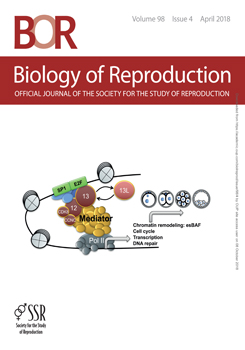The reproductive consequences of global warming are not currently understood. In order to address this issue, we have examined the reproductive consequences of exposingmalemice to a mild heat stress. For this purpose, adultmalemice were exposed to an elevated ambient temperature of 35°C under two exposure models. The first involved acute exposure for 24 h, followed by recovery periods between 1 day and 6 weeks. The alternative heating regimen involved a daily exposure of 8 h for periods of 1 or 2 weeks. In our acute model, we identified elevated sperm mitochondrial ROS generation (P < 0.05), increased sperm membrane fluidity (P < 0.05), DNA damage in the form of single-strand breaks (P<0.001), and oxidative DNAdamage (P<0.05), characteristic of an oxidative stress cascade. This DNA damage was detected in pachytene spermatocytes (P < 0.001) and round spermatids (P < 0.001) isolated from testes after 1 day heat recovery. Despite these lesions, the spermatozoa of heat-treated mice exhibited no differences in their ability to achieve hallmarks of capacitation or to fertilize the oocyte and support development of embryos to the blastocyst stage (all P>0.05). Collectively, our acute heat stress model supports the existence of heat susceptible stages of germ cell development, with the round spermatids being most perturbed and spermatogonial stem cells exhibiting resistance to this insult. Such findings were complemented by our chronic heat stress model, which further supported the vulnerability of the round spermatid population.
Summary Sentence
Environmental heating induces a state of oxidative stress in the male germ line, affecting multiple germ cell types; primarily the round spermatid and pachytene spermatocyte populations.





